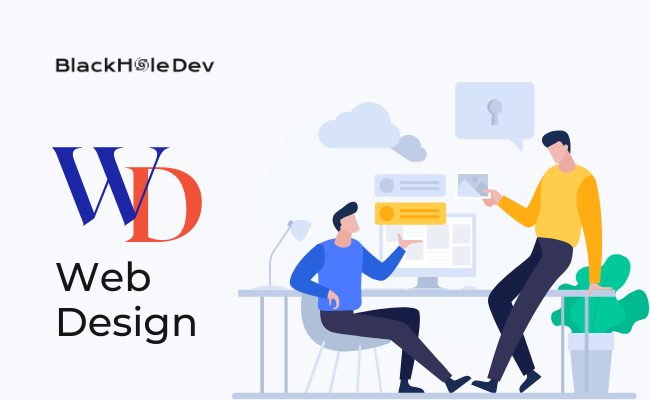
Introduction
In today’s ever-evolving digital landscape, establishing a robust online presence is indispensable for businesses and individuals seeking to thrive in the competitive digital arena. As the internet landscape undergoes continual transformation, the strategies for crafting impactful websites evolve in tandem, necessitating a proactive approach to stay ahead of the curve.This blog post explores transformative strategies in modern web design,highlighting the importance of staying updated with current trends to succeed in the digital landscape.
Understanding Modern Web Design
Modern web design transcends mere visual appeal; it’s about crafting experiences that seamlessly blend functionality, usability, and aesthetics. Throughout this exploration, we’ll dissect the foundational tenets of contemporary web design, examining how it has evolved alongside technological advancements and shifting user preferences. Furthermore, we’ll underscore the indispensable significance of prioritizing user experience (UX) and user interface (UI) design, elucidating how they serve as the bedrock for cultivating engaging and intuitive websites that leave a lasting impression on visitors.
Responsive Design and Mobile Optimization
As the prevalence of mobile devices continues to surge, the adoption of responsive design and mobile optimization has transitioned from optional to essential. In this discussion, we’ll demystify the concept of responsive design, elucidating its fundamental principles and delineating its myriad benefits in adapting web content across various screen sizes and resolutions. Additionally, we’ll delve into practical strategies aimed at crafting mobile-friendly websites that seamlessly adapt to the unique constraints and capabilities of smartphones and tablets, thereby ensuring a cohesive and immersive user experience across all devices.
Visual Storytelling and Branding
Visual storytelling and branding serve as potent instruments in captivating audiences and forging a robust brand identity. In this comprehensive examination, we’ll delve into the art of leveraging visual elements to craft narratives that resonate deeply with viewers, transcending mere information dissemination to evoke emotions and foster meaningful connections. Furthermore, we’ll underscore the pivotal role of branding in web design, emphasizing its capacity to imbue websites with a distinct personality and establish a memorable impression in the minds of visitors. In addition to exploring the significance of branding, we’ll offer practical insights and actionable tips for seamlessly integrating branding elements into web design, thereby fostering a cohesive and resonant online presence that leaves a lasting impact on audiences.
Interactive Elements and Engagement
Interactivity stands as a cornerstone in captivating website visitors and sustaining their interest in the content presented. Throughout our exploration, we’ll uncover a spectrum of interactive elements, spanning from dynamic animations and immersive videos to stimulating quizzes and engaging gamification features. By delving into these diverse interactive components, we aim to illuminate their profound impact on user engagement and interaction within the digital realm. Additionally, we’ll elucidate actionable strategies and best practices for seamlessly integrating these interactive elements into web design, empowering designers to foster deeper connections with their audience and cultivate immersive online experiences that leave a lasting impression.
Accessibility and Inclusivity
Ensuring websites are accessible to all users, irrespective of their physical or cognitive abilities, lies at the heart of creating truly inclusive online experiences. In our comprehensive exploration, we’ll underscore the paramount importance of accessibility in web design, shedding light on its transformative potential in fostering digital inclusivity and equal access to information for individuals with disabilities. Moreover, we’ll delve into the multifaceted aspects of accessibility, ranging from semantic HTML structure and keyboard navigation to alternative text for images and scalable fonts, elucidating actionable tips and best practices for designers to implement in their web projects. By prioritizing accessibility, designers can not only comply with legal requirements but also embrace a moral imperative to ensure that every individual, regardless of their abilities, can navigate and interact with digital content with dignity and ease.
Performance Optimization and Speed
Website performance and speed stand as pivotal determinants in both user experience and search engine optimization (SEO), wielding profound influence over visitor satisfaction and online visibility. Throughout our exploration, we’ll underscore the critical significance of optimizing website speed and performance, illuminating how swift loading times contribute to reduced bounce rates, increased user engagement, and improved search engine rankings. Moreover, we’ll delve into a spectrum of strategies tailored to enhance overall website performance, encompassing techniques such as optimizing images, leveraging browser caching, and minimizing server response times. Additionally, we’ll furnish designers and developers with an array of indispensable tools and resources for meticulously testing and fine-tuning website performance, empowering them to identify bottlenecks, diagnose issues, and implement effective optimizations that elevate the user experience and bolster SEO efforts.
Search Engine Optimization (SEO) Best Practices
SEO (Search Engine Optimization) remains a cornerstone in driving organic traffic to websites and amplifying their visibility in search engine results pages (SERPs). In our comprehensive exploration, we’ll elucidate the critical role of SEO in establishing a robust online presence, highlighting its profound impact on website discoverability and user engagement. Moreover, we’ll delve into the intricacies of SEO, unraveling its multifaceted components such as keyword research, on-page optimization, and link building, to provide a holistic understanding of its mechanisms and significance. Furthermore, we’ll furnish designers and developers with actionable strategies and best practices for seamlessly integrating SEO principles into web design, ranging from optimizing meta tags and headings to enhancing site structure and navigation.
Analytics and Continuous Improvement
Tracking website performance and user behavior serves as a cornerstone for making informed, data-driven decisions and perpetually refining your online presence. Throughout our comprehensive discussion, we’ll underscore the indispensable role of analytics in web design, elucidating how robust data insights empower designers and developers to gain a deep-seated understanding of user interactions, preferences, and pain points. Moreover, we’ll delve into the multifaceted aspects of analytics, ranging from basic metrics such as website traffic and bounce rates to more advanced analytics like user demographics and conversion funnels, to provide a comprehensive overview of its capabilities and applications. Furthermore, we’ll equip businesses and individuals with a repertoire of actionable strategies for leveraging analytics tools effectively, encompassing techniques such as setting up conversion goals, conducting A/B testing, and employing heatmaps and session recordings.
Conclusion
In conclusion, enhancing your online presence in the realm of IT services necessitates a deep comprehension of contemporary digital strategies and a dedication to remaining abreast of ongoing trends. By integrating the transformative tactics delineated in this discourse, companies and individuals within the IT sector can forge dynamic digital platforms that effectively engage their audience, positioning themselves for success in an ever-evolving digital sphere.











